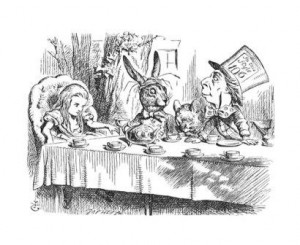 I have no good answer to Lewis Carroll’s riddle ‘Why is a raven like a writing desk?’ – but I’ve always thought there must be some connection with trees.
I have no good answer to Lewis Carroll’s riddle ‘Why is a raven like a writing desk?’ – but I’ve always thought there must be some connection with trees.
I love trees. I am an unashamed tree-hugger. I have gazed in wonder at giant redwoods and stroked their strange fire-proof bark, stood enchanted by the mysterious Dragon Tree in Tenerife, ridden amongst the cork forests near Tarifa with delight and I hold an undying affection for the poor old Crouch Oak, Addlestone.
And in books – oh so many to treasure. The apple tree that grew immediately in the brand-new Narnia & made that wardrobe, The Whomping Willow, the Mallorns and all the wondrous Ents. I have wept for the fate of the Entwives.
So it’s not surprising that I can be moved by bonsai. A really well-executed one can take me into another world. The bonsai creator tries to mimic the natural beauty of the yamadori – a tree shaped by its surroundings into a sculpture reflecting its struggle and survival. The ceation of bonsai is, of course, artifice: a simulation of effects that occur organically into a pleasing, portable form.
Like a book.
All writing is like that: reality shaped into a pleasing form, however minute or contorted. We might have to bend the truth to make it fit, snip and constrain to make the very best work – but our readership still responds to something like the yamadori.
And I think there’s more to this analogy – it lies with the writers themselves. Writers need to put down roots, spread them out into the humus of our culture : we need to read, watch, listen. Some of us may have a tap-root of deep knowledge in one area, others may go in for a mat of widespread understanding – and every convoluted variant in-between.
We have to develop a trunk to support us – the heartwood of experience. In bonsai, the most damaged be can be the most resilient and the most prized. I believe that can be true of writers.
And then comes the crown, a canopy of photosynthesising leaves that nurtures us first before providing shelter and pleasure and food for others. Creativity takes the up-coming sap of ideas and dreams and magically turns it into new, beautiful things. How mysterious is that?
That’s my alternative to the much-used journey metaphor: growth. I think we each have to find the right place to thrive. Sometimes that might be barren and constricted – and what makes us fruitful.
It’s all to do with maturity – and that’s a wide-ranging thing. Trees vary – like us. Willows can be at their prime in their twenties, beeches barely begun at sixty and the yew is still adolescent at one hundred. But whatever their life story, trees never stop growing.
I am much encouraged that the ‘early ancient to senescent, or Veteran Stage’ :
for trees with a strong defense system such as oaks, … may be the longest life stage.
(Tree Care Primer – Christopher Roddick)
I take heart in that. My time for blossoming could be now. I may only get rooks and ravens hanging about in my branches – or be felled to make someone else’s writing desk – but thus far, I’m still growing.



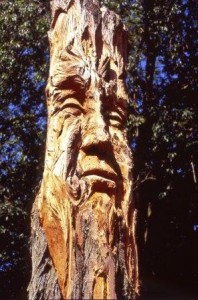
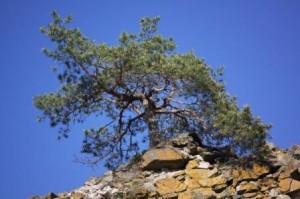
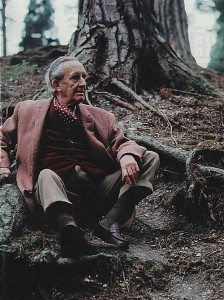
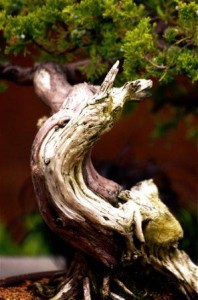
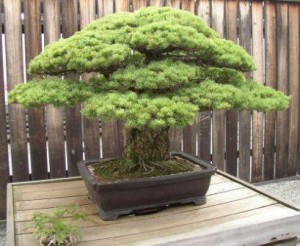
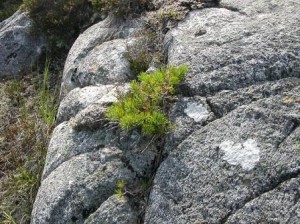
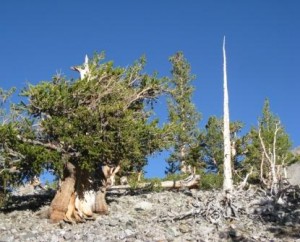
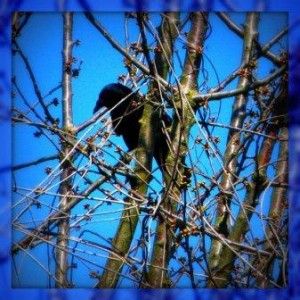
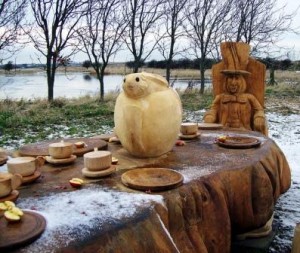
This is a wonderful blog. My father loved trees and wood and he passed that love on to me. I think trees are amazing, healing things. Thank you for writing this
Thank you for commenting. Yes, indeed trees give solace to the soul.
Lovely post. Trees are incredible things. I read somewhere recently that they don’t degenerate with age – what kills them is the accumulation of injuries, disease, rot. But theoretically, in conditions from which all external threats were absent, they could live forever.
Your last photograph made me remember a chap we passed on the road yesterday here in Powys. He had a big van and a caravan parked in a lay-by and woodcarvings arranged on the ground around them. On the van were painted the words “Joe Nomad, Woodcarver”. So I googled him and here he is: http://www.demotix.com/news/1136892/afghan-chainsaw-carver-returns-wales-replenish-stock#media-1136807
Oh, thanks for that Sara. He has such a talent.
I think my analogy would work for any creative artist, whatever their medium.
Lovely piece. I went along with every bit of it. Whatever our life story, we never stop growing. Don’t know that I care to be somebody else’s writing desk while there’s still life in me – but one day when I’m gone, maybe.
Thank you, Pauline – much appreciated. I rather like the idea that my work might go on to support someone else’s creativity – after I’m a bit of humus myself, of course!
I love trees too, and for very similar reasons – though I always feel bonsai are a kind of crime against what they are meant to be. Wasn’t it Keats who talked about the human brain as being “many-branched”?
Welcome Amanda – and thanks for commenting. I see what you mean about bonsai – though I have always found pollarding more upsetting. And as for the brain being many-branched, is that why the nerves are called dendrites?
I could never see you as a boring old writing desk love, you’d be a marvelous old bureau full of loads of information, history and fondness… whereas I’d be a battered old school desk full of stains, junk and graffiti x
There is a beautiful old Oak in our nearby south London park that is estimated (I’m told) to be several hundred years old. It has withstood the bombs of the second world war and the encroachment of the city. If it wasn’t so cold tonight I’d go and hug it right now. Thanks for the lovely post.